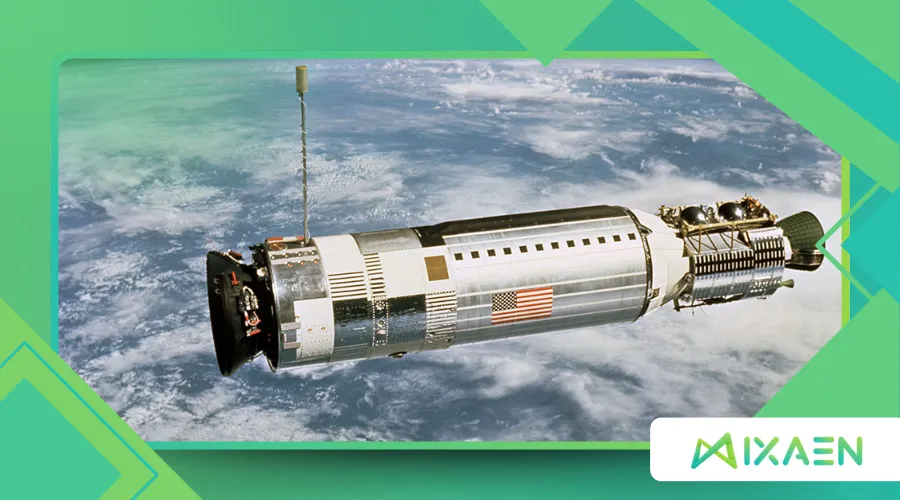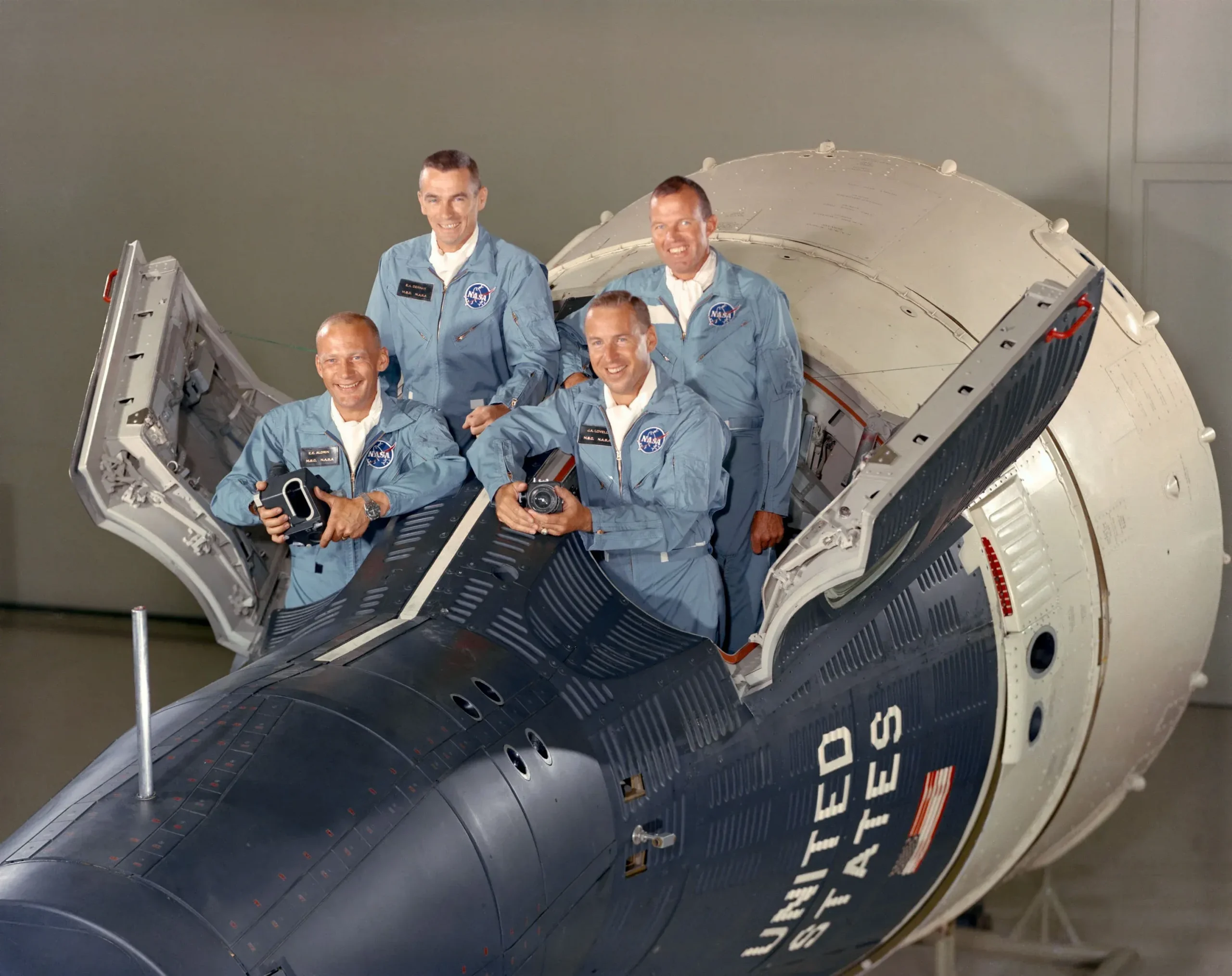Gemini Project: The Space Program That Prepared Humanity for the Moon

The Gemini Project stands as one of the most pivotal yet often overlooked chapters in the history of space exploration.
Anúncios
Nestled between the pioneering Mercury missions and the legendary Apollo program, Gemini served as the critical bridge that transformed humanity’s dreams of lunar exploration into a tangible reality.
Without the technological advancements, astronaut training, and operational confidence gained during this program, Neil Armstrong’s iconic first step on the Moon might never have happened.
Gemini not only advanced our understanding of spaceflight but also fostered international collaboration in space exploration.
The lessons learned during this era laid the groundwork for future partnerships, which are essential as we look to explore beyond our Moon and into Mars and beyond.
The Vision Behind the Gemini Project
Conceived in the early 1960s, the Gemini Project was NASA’s answer to the challenges posed by President John F. Kennedy’s audacious goal of landing a man on the Moon by the end of the decade.
While Mercury proved humans could survive in space, Gemini aimed to demonstrate they could thrive there.
The program’s name, derived from the Latin word for “twins,” reflected its two-person crew design, a significant leap from Mercury’s solo flights.
The Gemini missions were not just about sending astronauts into orbit; they were about mastering the complexities of space travel.
From perfecting orbital maneuvers to conducting spacewalks, the program laid the groundwork for Apollo’s success.
It was a daring experiment in innovation, resilience, and human ingenuity.
The program also emphasized teamwork, showcasing how astronauts could work closely together in the confined environment of a spacecraft.
This focus on collaboration would prove invaluable during the Apollo missions, where teamwork was essential for success in the high-stakes environment of space travel.
Technological Breakthroughs That Shaped the Future
One of the most remarkable achievements of the Gemini Project was the development of rendezvous and docking techniques.
These maneuvers were essential for the Moon landing, as they allowed spacecraft to connect in orbit—a capability Apollo would later rely on for its lunar module and command module operations.
The program also introduced the first onboard computers, a revolutionary step at the time.
These systems, though primitive by today’s standards, enabled precise navigation and control, reducing reliance on ground-based calculations.
Additionally, Gemini spacecraft featured fuel cells for power, a technology that would become standard in future missions.
The introduction of these technologies not only advanced the capabilities of spaceflight but also paved the way for innovations in various fields, including telecommunications and computing.
Moreover, the lessons learned from the Gemini Project influenced the design of modern spacecraft, ensuring that the safety and efficiency of space travel continue to evolve.
Training the Moonwalkers
The Gemini Project was as much about training astronauts as it was about testing technology.
The program’s rigorous simulations and real-space experiences prepared crews for the complexities of lunar missions.
Astronauts like Neil Armstrong, Buzz Aldrin, and Michael Collins, who would later make history with Apollo 11, honed their skills during Gemini.
One of the most critical training exercises involved mastering docking procedures.
The Gemini 8 mission, commanded by Armstrong, showcased the importance of this skill when an emergency thrusters malfunction forced an early return to Earth.
Armstrong’s calm under pressure during this crisis demonstrated the value of the program’s training protocols.
The psychological and physical training that astronauts underwent was equally crucial, as it prepared them for the stresses of space travel.
These comprehensive training programs ensured that astronauts could respond effectively to unexpected challenges, reinforcing the importance of preparation in successful missions.

+ The Future of Space Exploration: The Role of SpaceX’s Starship
Overcoming Challenges and Setbacks
The Gemini Project was not without its share of difficulties.
Technical malfunctions, such as the thruster issue during Gemini 8, and the physical strain of spacewalks highlighted the dangers of space exploration.
However, each setback provided valuable lessons that informed future missions.
For example, the near-disaster of Gemini 8 underscored the need for robust emergency procedures and redundant systems.
Similarly, the difficulties faced during early EVAs led to improvements in spacesuit design and life support systems.
These challenges, though daunting at the time, ultimately strengthened NASA’s ability to tackle the unknowns of space.
The resilience demonstrated by the teams involved in Gemini set a precedent for how future missions would approach problem-solving and innovation.
By learning from failures, NASA fostered a culture of continuous improvement, which is vital for the ever-evolving field of space exploration.
The Legacy of Gemini
By the time the Gemini Project concluded in 1966, it had achieved all its primary objectives.
The program’s 10 crewed missions demonstrated the feasibility of long-duration spaceflight, perfected critical maneuvers, and provided invaluable data on human performance in space.
The success of Gemini directly enabled the Apollo program to achieve its historic goal.
Without the lessons learned during Gemini, the Moon landing might have remained a distant dream.
As NASA historian Roger Launius noted, “Gemini was the proving ground for Apollo. It was where we learned how to fly in space.”
The legacy of the Gemini Project continues to resonate today, inspiring new generations of scientists and engineers.
Many of the principles established during the Gemini missions are still applied in current space exploration initiatives, including the Artemis program aimed at returning humans to the Moon.

Tables: Key Achievements and Milestones of the Gemini Project
| Mission | Key Achievement | Significance |
|---|---|---|
| Gemini 3 | First crewed Gemini mission | Tested spacecraft systems and maneuverability |
| Gemini 4 | First American spacewalk (Ed White) | Demonstrated the feasibility of extravehicular activity |
| Gemini 5 | First week-long spaceflight | Proved humans could survive in space for extended periods |
| Gemini 6A/7 | First orbital rendezvous | Paved the way for Apollo’s lunar module docking |
| Gemini 8 | First docking with another spacecraft | Highlighted the importance of emergency procedures |
| Gemini 11 | Highest Earth orbit achieved (850 miles) | Tested high-altitude operations and reentry techniques |
++ How the Artemis Project Will Return Humanity to the Moon
| Technology | Impact |
|---|---|
| Onboard computers | Enabled precise navigation and control |
| Fuel cells | Provided reliable power for longer missions |
| Improved spacesuits | Enhanced safety and mobility during spacewalks |
Conclusion: The Unsung Hero of Space Exploration
The Gemini Project may not have the same fame as Apollo, but its contributions to space exploration are immeasurable.
By tackling the challenges of orbital flight, rendezvous, and human endurance, Gemini transformed the theoretical into the achievable.
It was the unsung hero that prepared humanity for its greatest adventure—the Moon landing.
As we look to the future of space exploration, with missions to Mars and beyond, the lessons of Gemini remain as relevant as ever.
The program’s legacy is a testament to the power of innovation, determination, and the relentless pursuit of knowledge.
In the words of astronaut Jim Lovell, “Gemini was the bridge between the first steps of Mercury and the giant leaps of Apollo.”
And what a bridge it was.
The spirit of Gemini continues to inspire new missions and initiatives, reminding us of the importance of perseverance in the face of challenges.
As we embark on the next chapter of space exploration, we honor the legacy of Gemini and the pioneers who made it all possible.
